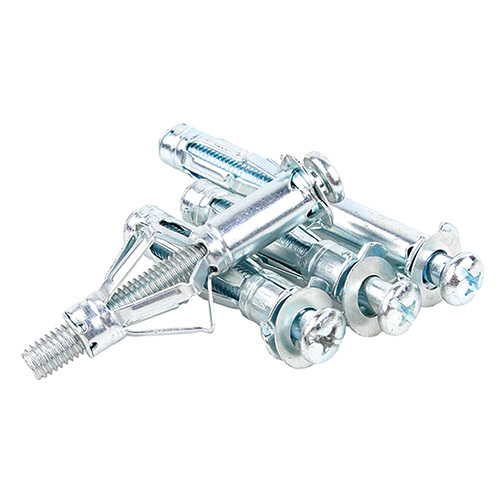Understanding the Different Materials Used in Electric Buckle Nuts: A Comprehensive Guide
2025-04-14
Understanding the Different Materials Used in Electric Buckle Nuts
Electric buckle nuts are essential components in various industrial applications, ensuring secure fastening and reliable connections. The materials used to manufacture these nuts significantly influence their performance characteristics, longevity, and suitability for specific environments. In this comprehensive guide, we will delv
Understanding the Different Materials Used in Electric Buckle Nuts
Electric buckle nuts are essential components in various industrial applications, ensuring secure fastening and reliable connections. The materials used to manufacture these nuts significantly influence their performance characteristics, longevity, and suitability for specific environments. In this comprehensive guide, we will delve into the different materials commonly used in electric buckle nuts, examining their unique properties, advantages, and applications.
Table of Contents
1. Introduction to Electric Buckle Nuts
2. Importance of Material Selection
3. Common Materials Used in Electric Buckle Nuts
3.1 Steel
3.2 Stainless Steel
3.3 Aluminum
3.4 Brass
3.5 Plastic and Composite Materials
4. Performance Characteristics of Different Materials
5. Applications of Electric Buckle Nuts
6. Factors to Consider When Choosing Material
7. Maintenance and Care for Electric Buckle Nuts
8. Frequently Asked Questions (FAQs)
9. Conclusion
1. Introduction to Electric Buckle Nuts
Electric buckle nuts play a critical role in the assembly of electrical connections, providing a robust fastening solution that meets the demands of industrial applications. These nuts are designed to secure components in place, preventing loosening due to vibrations or thermal expansion. Understanding the different materials used in electric buckle nuts is vital for ensuring optimal performance in various environments.
2. Importance of Material Selection
The selection of material for electric buckle nuts is crucial for several reasons. The right material can enhance the durability and corrosion resistance of the fastener, contributing to the overall reliability of the equipment. Furthermore, materials with specific properties can improve electrical conductivity, thermal resistance, and weight considerations, making them more suitable for particular applications.
3. Common Materials Used in Electric Buckle Nuts
Electric buckle nuts are available in a variety of materials, each offering distinctive benefits. The following sections will explore the most common materials used in their production.
3.1 Steel
Steel is one of the most widely used materials for electric buckle nuts due to its strength and versatility. Carbon steel, in particular, offers excellent tensile strength and durability, making it ideal for heavy-duty applications. Steel buckle nuts can be treated with coatings to enhance corrosion resistance and prolong their lifespan.
3.2 Stainless Steel
Stainless steel is renowned for its excellent corrosion resistance, making it a preferred choice in environments exposed to moisture or chemicals. The addition of chromium provides a protective layer that prevents rust and degradation. Stainless steel electric buckle nuts are ideal for marine and food processing industries, where hygiene and durability are paramount.
3.3 Aluminum
Aluminum is a lightweight material that exhibits good corrosion resistance and is readily malleable. Electric buckle nuts made from aluminum offer a balance between strength and weight, making them suitable for applications where reducing overall weight is essential, such as in aerospace and automotive industries.
3.4 Brass
Brass is an alloy of copper and zinc, known for its excellent electrical conductivity and resistance to corrosion. Electric buckle nuts made from brass are commonly used in electrical applications, where reliable conductivity is crucial. Additionally, brass offers a distinctive aesthetic appeal, making it popular in decorative applications.
3.5 Plastic and Composite Materials
Plastic and composite materials are gaining popularity in the manufacturing of electric buckle nuts due to their lightweight nature and resistance to corrosion and chemicals. These materials are particularly advantageous in applications where non-conductive properties are required. While they may not offer the same strength as metal options, advancements in composite technology have led to the development of high-performance alternatives.
4. Performance Characteristics of Different Materials
When evaluating the performance characteristics of electric buckle nuts, several key factors come into play, including tensile strength, corrosion resistance, electrical conductivity, and thermal stability. Following is a detailed comparison of how various materials stack up against these criteria:
- **Tensile Strength**: Steel and stainless steel generally exhibit the highest tensile strength, making them suitable for demanding applications. Aluminum, while lighter, still provides adequate strength for many uses. Brass and plastic materials may have lower tensile strength but compensate with other benefits.
- **Corrosion Resistance**: Stainless steel and brass lead in corrosion resistance, making them ideal for harsh environments. Aluminum also performs well but may require an anodized finish for enhanced protection. Plastic materials offer excellent resistance to chemicals but may not withstand high temperatures.
- **Electrical Conductivity**: Brass is the standout choice for applications requiring high electrical conductivity, followed closely by copper-based alloys. Steel and stainless steel offer moderate conductivity, while plastic materials are non-conductive.
- **Thermal Stability**: Stainless steel and aluminum are effective at high temperatures, withstanding thermal expansion without compromising structural integrity. Plastic materials may not be suitable for high-temperature applications, as they can deform or degrade.
5. Applications of Electric Buckle Nuts
Electric buckle nuts serve crucial roles across various industries, including:
- **Aerospace**: Lightweight aluminum and high-strength steel buckle nuts are essential in aircraft assembly for secure connections while minimizing weight.
- **Automotive**: Electric buckle nuts find applications in electrical systems, chassis assembly, and under-the-hood components, where durability and resistance to vibration are critical.
- **Marine**: Stainless steel buckle nuts are commonly used in marine applications due to their corrosion resistance in saltwater environments.
- **Electrical**: In electrical systems, brass buckle nuts ensure reliable connectivity, making them indispensable in wiring harnesses and circuit boards.
- **Manufacturing**: Plastic and composite buckle nuts are increasingly used in manufacturing equipment, where lightweight, non-conductive properties are advantageous.
6. Factors to Consider When Choosing Material
Several factors should be considered when selecting the appropriate material for electric buckle nuts:
- **Application Environment**: Assess the environmental conditions, including exposure to moisture, chemicals, and temperature variations.
- **Weight Considerations**: In applications where weight is a concern, materials like aluminum or plastic may be preferred.
- **Strength Requirements**: Determine the necessary tensile strength for the application to ensure the chosen material can withstand operational stresses.
- **Conductivity Needs**: For electrical applications, prioritize materials with high conductivity, such as brass or copper alloys.
- **Cost and Availability**: Evaluate budget constraints and the availability of materials to make informed selections.
7. Maintenance and Care for Electric Buckle Nuts
Proper maintenance of electric buckle nuts is essential to ensure their longevity and performance. Here are some recommended practices:
- **Regular Inspection**: Conduct routine inspections to identify any signs of wear, corrosion, or loosening.
- **Cleaning**: Keep buckle nuts clean and free from debris, which can affect performance. Use appropriate cleaning agents based on material type.
- **Re-torquing**: Periodically check and re-torque buckle nuts to maintain secure connections, especially in high-vibration environments.
- **Environmental Protection**: Where applicable, apply protective coatings to enhance corrosion resistance and extend service life.
8. Frequently Asked Questions (FAQs)
Q1: What is the main advantage of using stainless steel for electric buckle nuts?
A1: Stainless steel offers exceptional corrosion resistance, making it ideal for harsh environments, including marine and food processing applications.
Q2: Can plastic electric buckle nuts be used in high-temperature applications?
A2: While some plastic compounds can withstand moderate temperatures, most plastic electric buckle nuts are not suitable for high-temperature applications due to potential deformation.
Q3: How do I choose the right material for my specific application?
A3: Consider factors like environmental conditions, required strength, electrical conductivity needs, and weight considerations to select the most appropriate material.
Q4: Are aluminum electric buckle nuts as strong as steel ones?
A4: While aluminum is lightweight and offers good strength, steel generally provides higher tensile strength, making it more suitable for heavy-duty applications.
Q5: What maintenance practices should I follow for electric buckle nuts?
A5: Regular inspection, cleaning, re-torquing, and applying protective coatings when necessary are key maintenance practices to ensure optimal performance and lifespan.
9. Conclusion
Understanding the different materials used in electric buckle nuts is essential for making informed decisions in industrial applications. Each material offers unique properties, influencing performance, durability, and suitability for specific environments. By considering the application requirements and environmental factors, you can select the right material that ensures secure fastening and reliable connections in your equipment. With proper maintenance, electric buckle nuts can provide long-lasting performance, contributing to the efficiency and safety of various industrial applications.
Keywords:
Hot Products
Related news
Understanding the Role of Anti-Return Washers in Industrial Applications
Table of Contents
What Are Anti-Return Washers?
The Importance of Anti-Return Washers in Industrial Applications
How Anti-Return Washers Work
Different Types of Anti-Return Washers
Benefits of Using Anti-Return Washers
Applications of Anti-Return Washers in Various Industries
Best Practices for Installation and
2025-05-02
Understanding Lock Washers with Double Knurling: Enhancing Fastener Performance
Lock washers are essential components used in various applications to prevent the loosening of fasteners due to vibrations or dynamic loads. Among the different types of lock washers, those featuring double knurling stand out for their unique design and enhanced performance. This article will discuss the significance of lock washers with double knurling, providing insights that can help profession
2025-04-29
Why Choose Lock Washers with Double Knurling for Your Next Project?
Why Choose Lock Washers with Double Knurling for Your Next Project?
Lock washers play a crucial role in various industrial applications, ensuring a secure and reliable fastening. Among the many types of lock washers available, **lock washers with double knurling** stand out for their unique design and added benefits. This article will explore why these washers are a top choice for your next projec
2025-04-26










